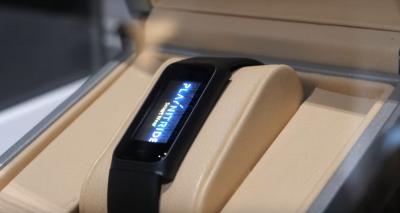This article is the second article in a short series of articles that discuss the efficiency of microLED displays. Our previous article discussed the quantum efficiency of microLED chips - with a conclusion that these can be quite efficient.

This article will look at the entire microLED display, and also compare it to current LCD and OLED displays. After all one of the main advantages of microLED displays is the increased efficiency (and brightness) compared to current displays. Most people assume that indeed microLEDs are much more efficient than OLEDs and LCDs.
As we have seen in the previous article, the efficiency of a blue microLED (blue is the most efficient LED color) is around 35-40% (EQE). MicroLED chips are indeed more efficiency than OLED emitters. For red and green OLED emitters, the EQE range at around 30% in theory, but in practice with high voltages (brightness) the EQE drops to around 15-20%. The efficiency of blue OLEDs is much lower - around 5-10% (although companies are developing next-generation high-efficiency blue OLEDs which will hopefully solve this issue).
When we look at the entire display, however, things are more complicated. It turns out that quite a bit of the energy is lost in the driving of the display rather than in the emitter in some cases.
For microdisplays, the silicon backplane is highly efficient, and thereâs minimal power loss, and in these displays microLED will indeed be much more efficient and bright than OLED microdisplays.
Moving over to small passive-matrix displays, it is estimated that the power loss in the driver electronics of such displays is around 25%. With active matrix LTPS TFTs, it is estimated that the power loss in the TFTs reaches almost 70%. In such displays, only 30% of the power goes to the emitter material or device. Even if microLEDs are twice as efficient as OLEDs, then the whole display will only get to be around 15% more efficient.
In fact we discussed this with industry experts, and it is expected that at least in the near future, microLED displays will only be marginally more efficient than OLEDs. It is estimated that a microLED LTPS display will have a display efficiency of around 10%.
If we look at LCDs, by the way, the situation is much worse - it is estimated that in large-area LCD TVs, the display efficiency is around 3% - even though thereâs minimal loss at the TFT because it is voltage driven. But LCDs suffer from low efficiency because of the energy loss in the color filters, polarizers and LC materials. Both OLEDs and microLEDs will outperform LCDs, but it seems as if microLEDs will not be able to achieve a meaningful step up in display efficiency - especially if/when an efficient blue emitter is finally developed which could dramatically increase the efficiency of OLEDs.
Of course it is hopeful that microLED displays, which are still at a very early stage of development, will offer much faster advances in technology - and maybe in efficiency too. Perhaps new backplane technologies (or maybe microIC-based displays) could prove to be the key for high efficiency microLED displays.

